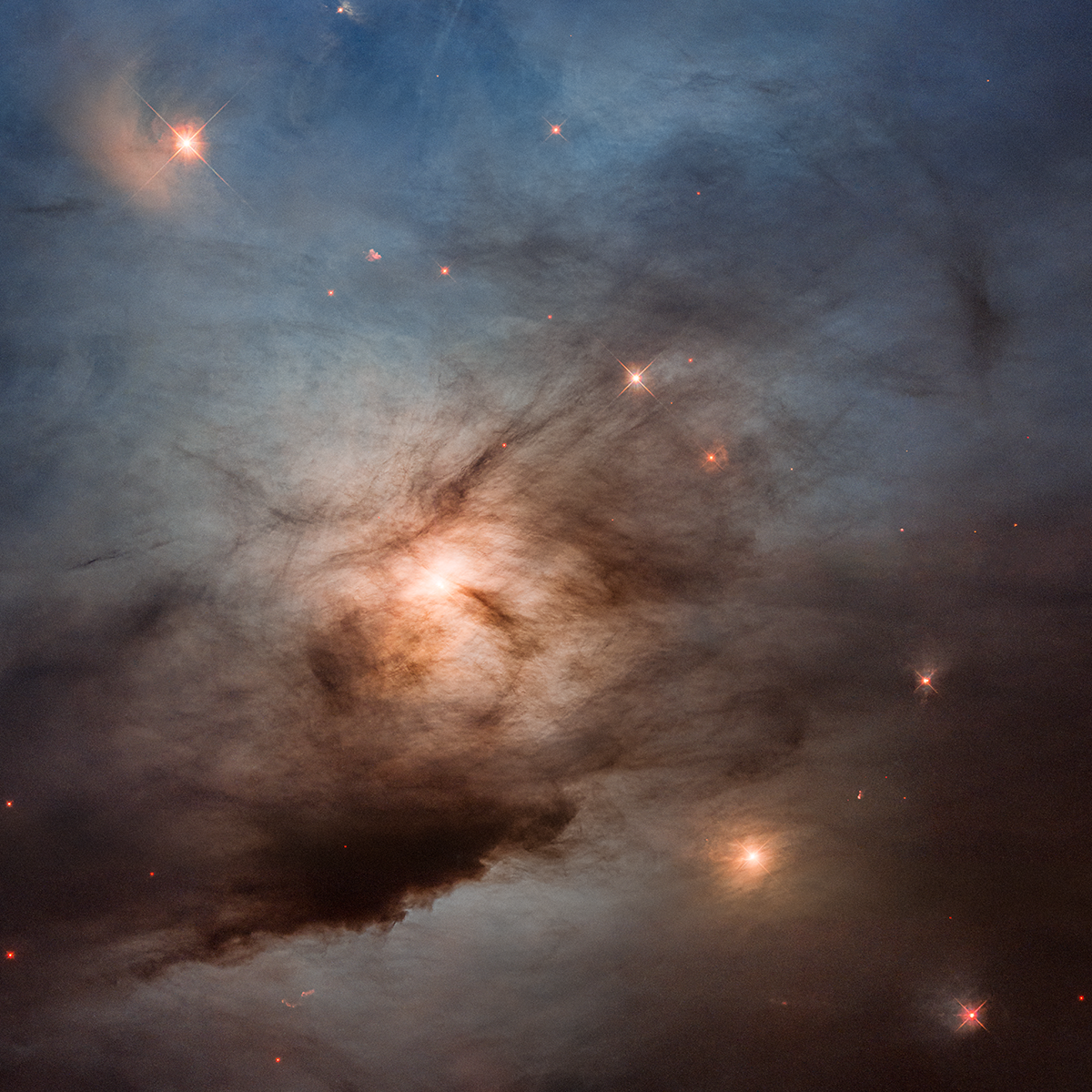
Summary
Dark Nebula is a Cauldron of Star Birth
You should know where you come from, but understanding the birth of our Sun and family of planets is largely sketchy because it happened 4.6 billion years ago. Trying to imagine far back in time, what were the initial conditions for the genesis of our solar system? Early astronomers thought the Sun formed in isolation, condensing from a wandering cloud of interstellar gas. This new picture of the nebula NGC 1333 offers a peek into the chaotic and messy star-formation process. For starters it shows that stars are not born in isolation but in batches. They are built from cold interstellar hydrogen that is laced with soot-like dust. Veils of dust block much of the Hubble Space Telescope’s view into the stellar cauldron. But young bright stars do poke out, like seeing sunlight pierce through clouds on a largely overcast day. Peering deep down inside, Hubble catches a glimpse of a fiery mosh pit of stars putting on their own fireworks show by blasting out jets of hot gas that look like July 4th Roman candles.
This photo was taken in celebration of the 33rd anniversary of the launch of the Hubble Space Telescope on April 24, 1990.

